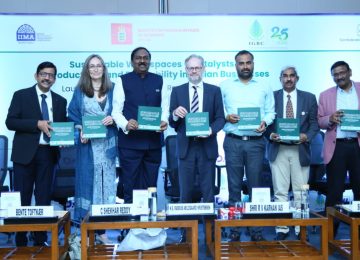India’s newly established Carbon Credit Trading Scheme (CCTS), set to begin compliance in 2026, faces a critical design challenge that could undermine its ability to drive decarbonization.
A report by the Institute for Energy Economics and Financial Analysis (IEEFA) urges regulators to immediately embed a Price or Supply Adjustment Mechanism (PSAM) to ensure the market delivers a credible and sustained carbon price.
Learning from global carbon market mistakes:
India’s CCTS, a national carbon market covering nine industrial sectors, uses an intensity-based baseline-and-credit system—a pragmatic approach for a fast-growing economy. However, certain design features, such as indefinite credit banking combined with initially cautious emissions reduction targets, pose a risk of structural oversupply. This oversupply could lead to a collapse in the price of carbon credits, dampening the financial incentive for companies to invest in cleaner technologies.
Delaying stability mechanisms, as seen in the EU ETS and markets in Alberta and Australia, consistently results in prolonged periods of ineffective price discovery and eventually necessitates costly, politically contentious reforms. Conversely, carbon markets like California’s cap-and-trade, which embedded mechanisms like a rising price floor and a reserve from the outset, have successfully maintained stronger, more consistent price signals. Therefore, to ensure credibility, India must integrate a PSAM immediately, learning from global experience.
The solution: a tailored PSAM for CCTS
The PSAM is proposed as a transparent, rule-based stabilizer. It is not a substitute for robust emissions targets but a necessary safeguard to manage inevitable market imbalances. While the CCTS currently includes an indicative price collar, this alone cannot clear a substantial credit surplus.
For India’s CCTS, the IEEFA report suggests a tailored PSAM comprising three reinforcing elements:
Consignment Auctions: Establishing a central, regulator-managed auction for a portion of earned credits. This creates a direct ‘control panel’ to adjust credit supply and build a market reserve when bids fall short of the reserve price.
Vintage-based Credit Rules: Tagging credits by their issuance year and limiting their compliance life. This prevents older, surplus credits from continually meeting future obligations and encourages earlier use, signaling tighter future scarcity.
Refined Price Corridors: Using the existing price collar to guide intervention. Activation zones near the floor or ceiling could trigger credit withholding or release from the reserve, respectively, ensuring proactive management of price extremes.
Building an investment-grade market:
By integrating a tailored PSAM from the outset, India can guard against structural oversupply and the need for disruptive ‘super-tightening’ reforms down the line. A well-functioning and credible CCTS is essential for strengthening industrial competitiveness. It will also align India with global trade measures like the EU’s CBAM and position the nation as a leader in emerging-economy carbon market design.
For the CCTS to move beyond an administrative framework and become an investment-grade instrument for the energy transition, its architecture must balance flexibility with discipline. The PSAM is the key mechanism to provide that crucial discipline, according to the report.









